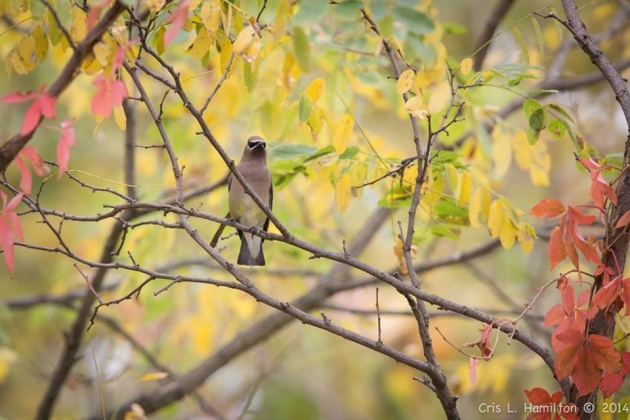
Cedar waxwings (Bombycilla cedrorum) are in town eating fruit on our trees, vines and shrubs. Their nomadic flocks go where the fruit is and right now it’s in Pittsburgh.
These sleek, fast moving, unpredictable birds are so social you almost never see one alone. The flocks can number in the hundreds, bouncing from tree to tree or perched high on bare branches.
Without binoculars they look like the last remaining leaves.
If you get a good look at a waxwing you’ll see a sleek bird, smaller than a robin, with a crest, black face mask, yellow tail tips, an olive brown back that fades to gray, a taupe breast and lemon yellow belly. If you’re lucky you’ll also see the waxy red wing tips that give the bird its “waxwing” name.
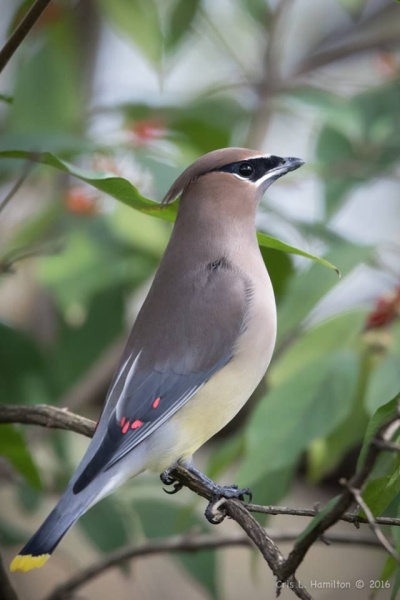
Its “cedar” name comes from the birds’ fondness for cedar berries.
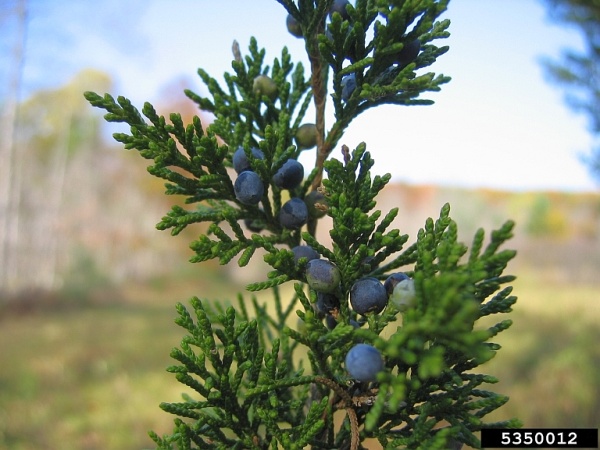
Cedar waxwings look easy to identify but they can fool you. They often flatten their crests and move so fast you can’t get a good look at them. In flight they resemble starlings, and there are some odd-looking birds among them.
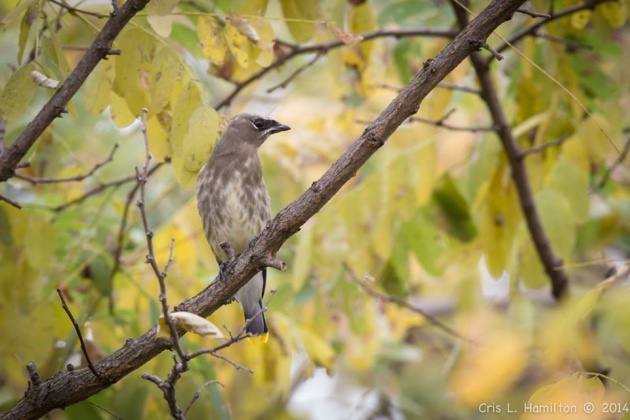
The mottled ones are immature waxwings whose body shape, black masks, and yellow tail tips are the hint to their identity.
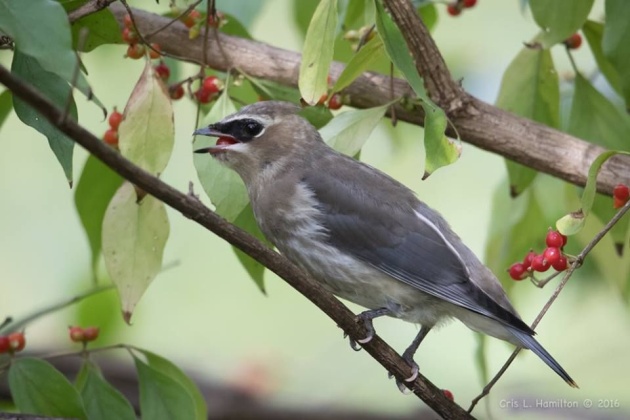
While feeding, the flock bounces and swirls above you. Then just before they all take off they raise their voices in high-pitched Zeeee’s and are gone. If you can’t hear the sound below, click here for the sonogram to see what you missed. (Note: There’s a cardinal in the background of the recording. You might hear the cardinal but not the waxwings. Cedar waxwings are one of the first bird sounds we lose as we age.)
“Cedar Waxwing (Bombycilla cedrorum)” xeno-canto XC313683 by Antonio Xeira
Though some waxwings stay all winter in southern Pennsylvania most of the nomads are on their way to the southern U.S. They’ll leave when they run out of fruit or a cold front arrives.
p.s. Cedar waxwings are one of the few species whose population has increased in the past 20 years, perhaps because there’s more fruit as invasive honeysuckle spreads and we plant ornamentals in new suburbs.
(cedar waxwing photos by Cris Hamilton, photo of eastern redcedar berries by Keith Kanoti, Maine Forest Service via Bugwood.org)
Unfortunately they are the ones to hit the window glass the most
Kate facinating. I am glad you put that hearing test in the Cedar Waxwing bio.I am still good at higher frequency.
We see these guys everyday we put out seed and when we don’t I think this bird calls us to refill the feeders.I think this is the most beautiful we see at our feeder.
We just had a large number of crows/ravens (not sure which) fly over Wheeling Hill crossing the Ohio River into Ohio. Every few seconds one would “caw” out! We get Turkey Vultures along the same route over our house regularly.
Thank you.
I love this blog! You have taught me so much about birds, and nature. Great photography too. Thanks for posting all this great info!